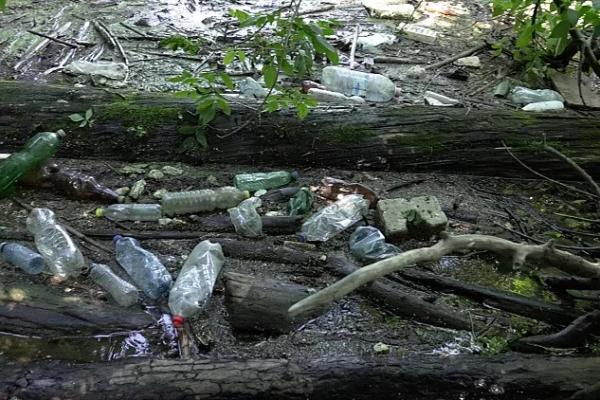Overview
Healthy surface water ecosystems are important for many reasons, not only for nature but also to ensure that citizens, agriculture and industry can access clean water. The health of surface waters is influenced by several factors including hydromorphology and pollution. The main legislation on inland, transitional and coastal surface waters focuses on achieving good ecological status and good chemical status.
Background
Since 2000, the Water Framework Directive (WFD) has been the main legal instrument for water protection in Europe. Together with the Environmental Quality Standards Directive and the Groundwater Directive, it applies to inland, transitional and coastal surface waters, as well as groundwaters. It ensures an integrated approach to water management, respecting the integrity of entire ecosystems, including by regulating individual pollutants and setting corresponding regulatory standards.
Objectives
The EU aims to ensure that all surface water bodies achieve good ecological and good chemical status. For the former, surface waters must respect certain minimum levels of so-called quality elements, including biological, hydromorphological, physico-chemical (including nutrients) and general quality elements. For good chemical status, surface waters must meet minimum quality standards for selected pollutants, and must reduce or phase out the emissions of those substances to water.
In the EU
Law
Water Framework Directive 2000/60/EC (WFD)
The provisions outlined in the WFD are pivotal.
Annex V to the WFD details the quality elements that need to be taken into account in assessing ecological status. These elements include pollutants of national or local concern, for which Member States must set and meet environmental quality standards. The assessment of ecological status under the WFD is supported by the Intercalibration Decision.
The WFD covers surface water pollutants of greatest (EU-wide) concern by identifying them as so-called priority substances, including a subset of priority hazardous substances. They are listed in Annex X to the Directive, and environmental standards are set for them in the EQSD.
Environmental Quality Standards Directive (EQSD)
Member States must ensure that Environmental Quality Standards (EQS) set for the priority substances in the Directive are met in order to achieve good chemical status.
Surface water watch list
A Watch List mechanism was established in 2013 to improve the available information on identifying the substances of greatest concern. Member States have to monitor the substances on the list at least once per year for up to four years. The watch list was established in 2015, updated in 2018 and 2020 and again in 2022.
Strategic Approach to Pharmaceuticals in the Environment
In 2019, the Commission adopted a strategic approach to pharmaceuticals in the environment, a legal requirement of the Environmental Quality Standards Directive. It aims to counteract the negative effects of pharmaceuticals on the environment. It covers all phases of the lifecycle of pharmaceuticals, from design and production to use and disposal. It identifies over 30 actions in six areas, including
- raising awareness and promoting prudent use
- improving training and environmental risk assessment
- gathering monitoring data
- promoting greener pharmaceutical design and manufacturing
- reducing emissions from manufacturing
- reducing waste and improve wastewater treatment
Good progress has been made in implementing these actions, as detailed in this 2020 overview. Some are already well advanced or even completed. Several Green Deal Initiatives and the Pharmaceutical Strategy will also help to achieve the objectives. The overview looks at the implementation as a whole and outlines how each action has been implemented so far, and any planned follow‑up.
Review
The December 2019 Fitness Check concluded that the water legislation is broadly fit for purpose, with room for improvement in relation inter alia to chemical pollution, hence the 2022 proposal.
2022 proposal to revise list of priority substances in surface water
In October 2022 the Commission adopted a proposal to revise the list of priority substances in surface water. 25 substances are proposed for addition including a standard for total pesticides. The proposed substances pose well-documented risks to nature and human health. They include: PFAS - a large group of “forever chemicals” used in cookware, clothing and furniture, fire-fighting foams and personal care products; a range of pesticides; bisphenol A, a plasticiser and a component of plastic packaging; a number of pharmaceuticals used as painkillers, anti-convulsants or antibiotics; and silver.
The Commission has also proposed to update quality standards for a range of substances already on the list, mainly to make standards stricter because of evidence indicating a higher risk than originally identified. Among the substances with stricter standards are some metals and industrial chemicals. Four other existing priority substances are proposed for removal from the list, and another for integration into the new PFAS group, and eight already-regulated “other pollutants” have been re-designated as priority substances, resulting in a total of 74.
If the proposal is agreed by the Council and the European Parliament, Member States will be required to take measures to reduce the emissions of all these pollutants where necessary to meet the quality standards.
Find out more in the Press Release and Questions and Answers.
Related links
Related laws: Nitrates Directive, Urban Wastewater Treatment Directive, Directive on industrial emissions, Landfill Directive, Water Framework Directive, Groundwater Directive
Related topics: Industrial emissions, Urban environment
Related strategies: Circular economy action plan, Zero pollution action plan
Related Commission priorities: European Green Deal




